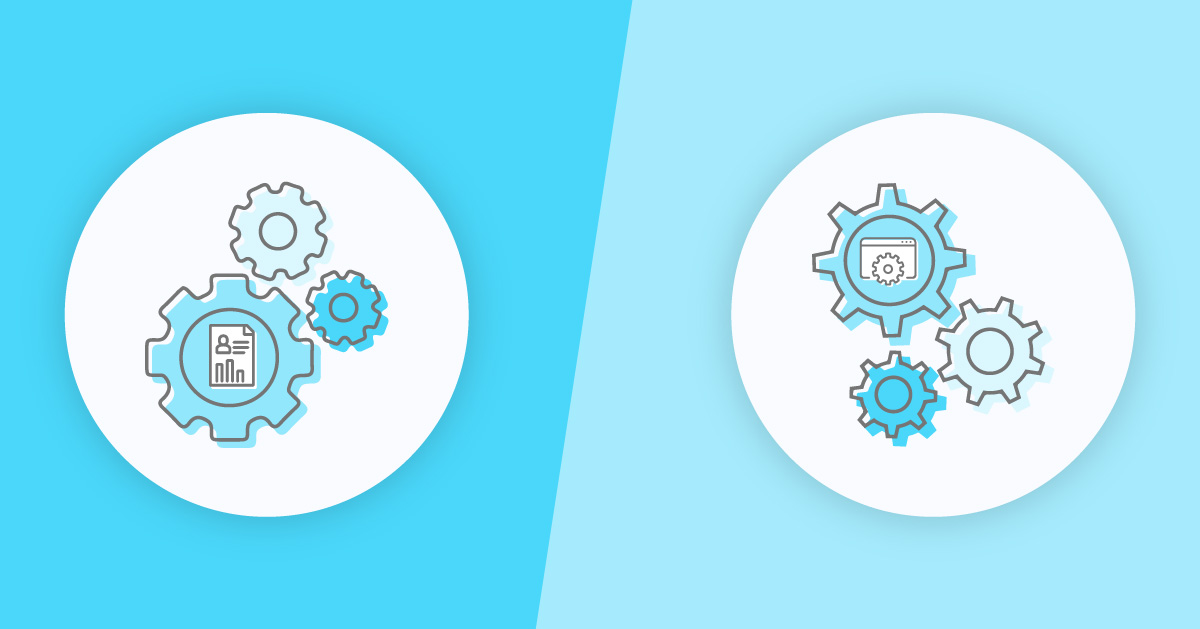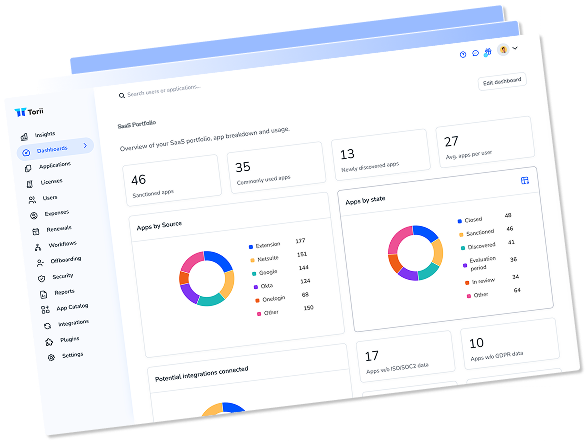“Who can provide access to this app?”
Sound familiar? Onboarding takes teamwork. But right now, that teamwork is not efficient (or even occurring) between IT and Human Resources (HR). So, how did we end up here?
First, we need to acknowledge the SaaS explosion. Many apps are now interwoven into the operations of organizations.
Second, we need to acknowledge the way those apps are adopted. The ease of SaaS has led to distributed adoption, with non-IT employees researching, testing, and adopting apps at will.
Third, this distributed adoption has scattered app information across every team—tucking it into data silos. As a result, usage, license counts, and ownership are difficult to discern—especially for IT.
Finally, and most importantly, that lack of information availability makes cross-functional collaboration difficult for IT. If an HR colleague needs guidance or support, IT lacks the info to contribute.
So how exactly does distributed adoption hurt IT’s collaboration with other teams? That’s the question we set out to ask in our report titled “State of SaaS at Work: Collaboration in a Distributed Workplace.” We asked 300 IT Directors, IT Managers, and CIOs how their company collaborates around cloud applications.
HR Must Collaborate With IT
HR teams are the culture engine of a company. They are trying to drive their company toward a productive culture—and to that end, first impressions are everything.
A company’s first impression can set the trajectory of a new hire’s career, and today, an employee’s first impression is all about technology. Whether remote, hybrid, or onsite—software onboarding is a huge factor in a new hire’s experience. Essentially, the productive culture that HR wants is enabled by fast, frictionless onboarding.
And yet, new hires typically have a 25% productivity rate in their first month. That only increases to 50% in the second month and 75% in the third month. Yikes—something is wrong.
Software woes don’t stop at access management. Since technology links directly to a company’s culture, frustrating tech will lead to frustrated employees. Nearly half of U.S. employees are likely to leave a job if they’re unhappy or frustrated with workplace tech.
Suddenly, HR’s success is directly tied to IT’s support.
Unfortunately, that support isn’t always there. Our research found that only 17% of respondents said IT and HR collaborate “often” or “continuously” to improve employee onboarding and offboarding.
Why? Consider the scattered information mentioned earlier. IT is unaware of which SaaS apps are utilized, who owns them, and how often they’re used.
Their hands are tied, so how could they support HR? Where do we go from here?
Distributed SaaS Management Can Improve HR & IT Collaboration
SaaS Management strategies must evolve with how companies engage with apps. That means adapting to distributed adoption with a Distributed SaaS Management strategy.
Distributed SaaS Management involves discovering and centralizing scattered app data throughout an organization and using that data to automate tough or time-sensitive tasks. That includes those that IT and HR frequently collaborate on, including onboarding, offboarding, and access management. As a result, IT can better support HR’s critical initiatives through the insights and time-savings gained via Distributed SaaS Management.
That includes speeding up provisioning by knowing every app owner, using a software app catalog for easy à la carte provision requests, and automating to better recycle and assign licenses. This is only possible with a SaaS Management Platform that leverages the information in your HR system. Once you centralize app information, it becomes fodder for more efficient and effective collaboration, including automating tasks that benefit both departments.
But, our “State of SaaS at Work” report found widespread issues with more than just HR and IT collaboration. Interested in learning more? >>> Download it now <<<

